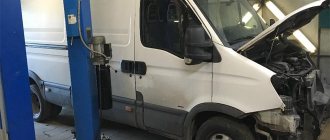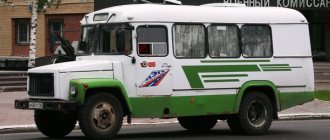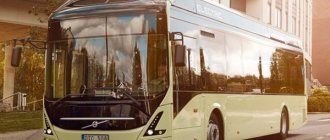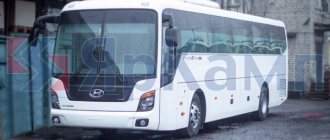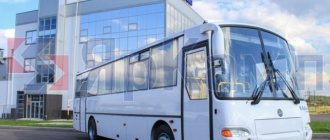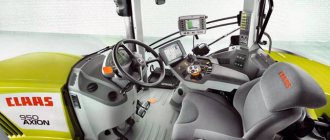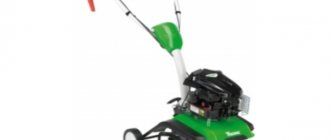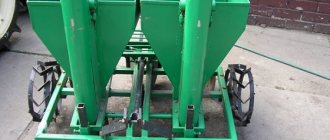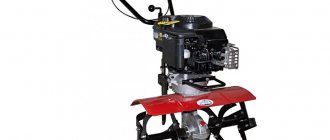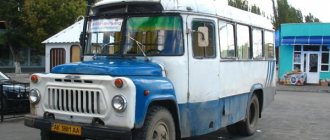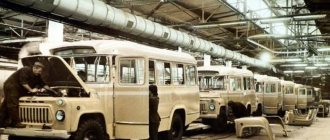8 8
Manufacturer information
4238-61 commuter Engine: YaMZ Power, hp: 209 Seating: 39 Standing places: 5
Find out the price
4235-61 “Aurora” suburb, Euro 5 Engine: YaMZ Power, hp: 170 Seats: 31 Standing places: 8 Luggage. compartment, m3: 2.1
Find out the price
4235-62 “Aurora” suburb, Euro 5 Engine: YaMZ Power, hp: 170 Seats: 29 Standing places: 6 Luggage. compartment, m3: 3.2
Find out the price
4238-62 suburban Engine: YaMZ Power, hp: 210 Seats: 35 Standing places: 5
Find out the price
4270-50 city, Euro 5 Engine: Cummins Power, hp: 202 hp Seats: 28 Standing places: 62 Dimensions, m: 10.3/2.5/3.2
Find out the price
4238-81 CNG, gas, Euro 5 Engine: YaMZ Power, hp: 209 Seats: 35 Standing places: 5 Dimensions, m: 10x2.5x2.97
Find out the price
4238-82 CNG, gas, Euro 5 Engine: YaMZ Power, hp: 209 Seats: 35 Standing places: 5 Dimensions, m: 10x2.5x2.97
Find out the price
4270-70CNG, gas, Euro 5 Engine: Cummins Power, hp: 230 Seats: 28 Standing places: 62 Dimensions, m: 10.2x2.5x3.6
Find out the price
4235-65 school Engine: YaMZ Power, hp: 170 Seats: 26 Dimensions, m: 8.4x2.5x3.0
Find out the price
4238-65 school Engine: YaMZ Power, hp: 210 Seats: 34 Dimensions, m: 10x2.5x2.9
Find out the price
Dealer Certificate The group is the official dealer of the GAZ Group "Russian Buses"
More details
Ask a question
8 8
KAVZ buses are the optimal choice for Russian roads
Kurgan Bus Plant is the largest domestic bus manufacturer. The company offers equipment for operation on any flights, including the transportation of passengers within the city and servicing long-distance intercity routes.
Strengths of KAvZ buses
The updated models have a number of advantages:
- progressive designs and high maintainability;
- modernized electrical equipment;
- attractive exterior and interior;
- low noise level and compliance with high environmental standards.
Many passenger automobile enterprises operate the KAvZ 4270 bus. This is a low-floor model with an updated design and large capacity (full - 90, seats - 28). The equipment is equipped with a Cummins gas power unit that meets EURO-5 standards.
On the page https://www.buspiter.ru/catalog/avtobusy-gruppy-gaz/avtobusy-kavz.html you can buy a KAVZ bus with the required characteristics. The catalogs provide a detailed description of each model, indicating technical parameters and other features of passenger equipment.
Kurgan Bus Plant (KAvZ)
Catalog > Kurgan Bus Plant (KAvZ)
OJSC " Kurgan Bus KAVZ" is completing construction and installation work on the painting and assembly plants and the small series workshop. Reserve production facilities with a total area of more than 30 thousand square meters are being created.
By 1993, the plant had prepared and organized the production of a new family of modular assembly carriage-type buses with a capacity of 24 seats, in a volume of 150-200 units. in year.
In this regard, in 1992, in order to create new experimental bus models, the plant created a small-scale production facility - a subsidiary, Vika LLC.
It was here that in 1992 the first carriage-type buses KAVZ-3275 , KAVZ-32784 , KAVZ-3278 , characterized by a higher level of comfort and meeting international safety requirements.
The designers of Vika LLC created the first Russian “camper” on the GAZ-3302 chassis (1991)
KAVZ-3244 buses on the ZIL-5301 (“Bychok”) chassis was manufactured at Vika .
In the 90s, due to changes in sectors of the national economy, including agriculture, consumer demand for small-capacity buses, the main consumers of which were state farms, collective farms, and state-owned enterprises of line ministries, sharply decreased. The need to create domestic production of large-capacity city buses in Russia has been identified.
Based on this, AK "KAVZ" began technical work. re-equipment of reserve production capacities for organizing the production of city buses.
In 1994, the plant produced 8 large-capacity city buses “ Ikarus-260 ” and 2 extra-large-capacity buses “ Ikarus-280 ”. Subsequently, in 1996, under the terms of an international tender, 168 Ikarusov-283.10 were manufactured for Yekaterinburg.
Economic crisis of the early 90s. in the country had a serious impact on the plant's activities - the production of buses sharply decreased, debts to creditors increased from year to year.
And in July 1997, at the initiative of creditors, the Kurgan Regional Arbitration Court decided to introduce external arbitration management at the plant, which gave the Joint Stock Company a chance, thanks to the temporary suspension of payments on previously accumulated debts, to get out of a difficult economic situation.
In December 1998, the Meeting of Creditors and then the Regional Arbitration Court confirmed the fact that the direction chosen by the company's management to improve the economic situation was correct, so the external arbitration management was removed and from that time the plant began to operate as an open joint-stock company.
In order to meet the market needs for large-capacity buses, in 1998, technical services developed new models of buses on the chassis of heavy-duty ZIL chassis - these are models of city and suburban buses KAVZ-422910 , KAVZ-4229-01 . Much attention is also paid to conquering the market for rotational buses. A KAVZ-422990 bus model is being developed on a ZIL all-wheel drive chassis with a 6x6 wheel arrangement. In addition, in 1998, by order of the Spetsgazavtotrans association, KAVZ returned to the production of rotational vehicles on the URAL chassis, the first batch of which was produced in 1981.
Fifth period - since 2001 Until now.
In 2001, the Kurgan Bus Plant became part of the largest engineering holding RusPromAvto, uniting the main manufacturers of bus and automobile equipment in Russia. The problems of the past years (the plant experienced both external management and management by an owner who did not want to invest in production) led to the fact that the enterprise found itself in a pre-bankruptcy state. Preservation of the entire production, warehouse infrastructure, and administrative apparatus, designed to produce 20,000 buses per year, became an unbearable burden for the factory economy. In addition, over the past years of activity, debts to the budget and funds have accumulated, and large accounts payable to suppliers have appeared. Thus, the new administration of the enterprise, the specialists of RusAvtobusProm, faced very serious tasks in getting the plant out of the most difficult economic situation.
To bring the enterprise out of the crisis, a KAVZ development program for the period 2003-2008 was developed and approved. Based on an agreement on socio-economic partnership between the leadership of the Kurgan region and the regional trade union organization of ASM workers, the main directions for creating conditions for the dynamic development of the Kurgan Bus Plant were adopted.
The basis of the product range traditionally consists of models based on the GAZ chassis. The main distinctive features of buses on the GAZ chassis are increased cross-country ability, ease of maintenance, and maintainability. Thanks to these qualities, buses can be operated in difficult climatic and road conditions. In 2002, the family of buses on the GAZ chassis was replenished with a new modification on the all-wheel drive chassis GAZ-3308 “Sadko”, which is equipped with both a gasoline and diesel engine.
Based on serial models on the GAZ chassis, a number of modifications are produced (insulated, extended, cargo-passenger, funeral bus), allowing to take into account the individual wishes of customers.
In 2001, the Kurgan bus was launched, which most fully meets the GOST requirements for buses for transporting children - the hood layout of the bus provides additional safety. The bus is also equipped with special seats with seat belts and armrests, places for backpacks and sports equipment, and internal and external speakerphone. In addition, the bus has a bright yellow color, which makes it noticeable on the roads.
The Kurgan Bus Plant completed the first order for the supply of buses under the School Bus program in 2001 (55 units) for the Yaroslavl region.
From the beginning of the program until 2004, the Kurgan Bus Plant manufactured and supplied more than 1,800 school buses to 34 regions of the Russian Federation. The largest shipments were received by the following constituent entities of the Russian Federation: Kaluga region, Tyumen region, Republic of Chuvashia, Krasnodar region, Khanty-Mansiysk Autonomous Okrug, Yaroslavl and Leningrad regions. Moreover, every year this program is gaining momentum - if in 2001 a little more than 100 school buses were manufactured, then in 2003 - almost 1000 vehicles.
Since 2002, the plant began implementing its regional School Bus program. To solve the problem of transporting children to rural schools, the administration of the Kurgan region plans to allocate 28.5 million rubles from the regional budget until 2005. In 2002, as part of the governor's program, KAVZ manufactured 55 buses, in 2003 - 61 buses.
Neighboring countries have also become interested in this solution to “children’s” problems. Thus, the first school buses (so far in small quantities) have already been delivered by the Kurgan Bus Plant to Belarus, Kazakhstan and Ukraine.
At the end of 2003, the KAVZ-397653 for transporting children successfully passed certification by the State Standard of Russia and received vehicle type approval. Thus, in Russia there was the only certified bus that complies with GOST R 51160 “Buses for transporting children.”
Products based on the ZIL chassis are fundamentally different from the 3976 models in terms of lower cross-country ability and, at the same time, a diesel engine, slightly improved design and higher comfort. As a result, buses can be successfully used as minibuses on urban and suburban routes, as well as transport for corporate transportation.
A promising direction of the enterprise’s activity is the production of medium-capacity Aurora buses, which, due to their modern design, high interior comfort, ergonomic driver’s seat, ease of operation and other features, are intended for suburban and intercity transportation, as well as for organizing tourist and corporate trips. Development of this model began in 2002.
https://rs-st.ru what are Polymer self-leveling floors.
1954 — 1958
: KAvZ-657
1955
: KAvZ-651 “Ritsa”
1958 - 1973
: KAvZ-651 / KAvZ-651A / KAvZ-651B / KAvZ-651G
1960
: KAvZ-985 (KuAZ-985)
1961 - 1968
: KAvZ-6 59 / KAvZ -663
1963
: KAvZ-3100 "Siberia"
1971 - 1977
: KAvZ-685V / KAvZ-685T
1971 - 1993
: KAvZ-685 / KAvZ-685M / KAvZ-3270 / KAvZ-3271
1978
: KAvZ-523 2
1992
: KAvZ-3275 / KAvZ-3278 / KAvZ-32784
1992 - 2008
: KAvZ-3976 / KAvZ-39762
1993
: KAvZ-3276
1997 - 2008
: KAvZ-39765
1998
: KAvZ-4229
1998 - 2007
: KA VZ-32441 KAvZ-3241 / KAvZ-3244 "Bull"
2001 - n.d.
: KAvZ-39762-023 / KAvZ-39765-023 / KAvZ-39767-023 “School”
2002 - n.d.
: KAVZ-4238 "Aurora" KAVZ-4235-33 "Aurora"
2005 - n.d.
: KAvZ-3208 "Valdai" / KAvZ-32081 "Valdai"
2008 - n.d.
: KAvZ-4239
KAVZ buses for work in the suburbs and intercity
The manufacturer produces several models for suburban routes, including the Aurora KAvZ 4235-61. This is a middle-class car with compact dimensions (thanks to this, the equipment feels confident on busy city roads). The model can accommodate up to 54 passengers (31 seats).
The salon is spacious and comfortable. There are special shelves for passengers' luggage. Other features include: ergonomic seat arrangement, reliable pressure-type doors. The Aurora KAVZ 4235-61 model uses high-quality components from foreign manufacturers.
Cursor
It was first shown two years ago: this is the first bus created by the GAZ Group as part of the unification of its model range. On the nose there is a Gaz emblem with a deer (in the future, the Gaz people want to erase the boundaries between their bus factories), the headlights are from Lawn Next, the engine is YaMZ-534.
The Liazov Cursor has a large GAZ emblem and headlights from Lawn Next. The facial expression is, of course, specific!
According to our information, today there are already more than a thousand Cursors running: 511 belong to the Moscow region Mostransavto, 369 to the capital Mosgortrans, there are them in Volgograd, Lipetsk, Khanty-Mansiysk, Krasnoyarsk and even Alma-Ata.
Low-Field Cursor with LF Index
But the low-field Cursor with the LF index is not cheap, about seven million rubles. Therefore, a simplified version of the LE “for regional markets” has now appeared - with a low floor only in the front part of the cabin and on Chinese HanDe Axle axles instead of German ZF portal ones. As stated, the price decreased by 20% (that is, to approximately 5.6 million rubles) - the Liazovites rolled out such a car to the ring.
Of course, the interior turned out to be a compromise: there are four steps in the rear, and passengers in the last row sit in a narrow “gallery”. And the driver's seat - with compromises!
Cursor interior in the new semi-low-floor LE version
Since I’m currently training to be a bus driver at the Mosgortrans plant, I’m used to driving full-size LiAZ-5292 cars around the capital with their large steering wheel and traditional front panel.
Driver's workplace of the low-floor Cursor
The low-floor Cursors, which were previously demonstrated at exhibitions (one of them was shown at the event), have the same steering wheel, which is also adjustable along with the panel. And the Cursor has LF...
The semi-low-floor Cursor has a grooved steering wheel and there are no automatic transmission keys on the front panel.
It’s as if it’s not LiAZ at all! The steering wheel is much smaller, from a groove, the panel (naturally, non-adjustable) is simple and raised higher, which slightly interferes with forward visibility. And where are the control buttons for the Allison automatic? No: it looks like the Allison remote control simply didn’t fit in the panel.
The Allison automatic selector is located inconveniently and is screwed inaccurately. The panel has large non-locking door control buttons
And instead of it there is a selector at the driver's seat. It is secured in the console inaccurately and literally pressed against the seat, and when switching, you had to look down so as not to make a mistake.
But the buttons for opening and closing the doors are good: large, red, backlit. You definitely won't miss it! But why are there two of them? Because this LiAZ also has two doors, not three: due to this, the number of seats has increased from 18 to 27.
The cursor steers competently and drives confidently, but the engine can be heard very clearly. When the car is “pulled”, vibrations from the engine even appear on the steering wheel - and this is when it is positioned in the rear! There are also typical Liaz brakes, but I’m already accustomed to them from the 12-meter models: the pedal is large and tight, the working stroke is short, and the braking system “grabs” sharply.
Serial production of semi-low-floor Cursors is about to begin, and in the meantime, the LiAZ team reported that they had simplified the large low-floor LiAZ-5292 in a similar way: it was also “transplanted” to Chinese HanDe Axle bridges. This option is considered low cost, “low budget”, in contrast to the “metropolitan” version with restyling and on ZF bridges.
Engine/powertrain characteristics
| Options | CUMMINS 6 ISBE4 210V | CUMMINS 6 BGE5 230 (CNG) |
| Type | Diesel engine | Gas engine |
| Number and arrangement of cylinders | 6R, vertical | 6R, vertical |
| Environmental safety standards | Euro 5 | Euro 5 |
| Working volume, l | 6,7 | 5,9 |
| Engine power, kW (hp)/min | 145 at 2300 min-1 | 168.8 at 2,800 min-1 |
| Max. torque, Nm/min | 750 at 1100…1800 min-1 | 678.3 at 1,800 min-1 |
| Engine location | Rear, longitudinal | Rear, longitudinal |
| checkpoint | Manual transmission: ZF 6 S 1010 BO, 6 speed. or Eaton, FSO-5206 | Manual transmission: ZF 6 S 1010 BO, 6 speed. or Eaton, FSO-5206 |
| Maximum speed, km/h | 100 | 100 |
| Bus warranty | 2 years or 100 thousand km | 2 years or 100 thousand km |
Vector Next
This “new groove” is a Gas product one hundred percent, since it is based on the finished chassis of the Lawn Next, only with air suspension at the rear. We have already talked about this model in detail, but then I was only able to drive around the site a little.
Vector Next turned out okay, although with a somewhat Asian appearance
This was the reason for the error: I wrote that the Vector Next engine was quiet, but objections from readers immediately began to pour in. And they are right!
Since the Vector Next is built on the Lawn Next chassis, the engine casing is raised at the front
At speed, the engine (the same YaMZ-534 as on the Cursor, only less powerful, 150-horsepower) makes quite a loud noise - maybe it would be worth making the sound insulation of the engine compartment and its cover more solid?
But drivers will light up in vain. The dynamics are impressive, the steering wheel with the gazelle steering wheel is very informative, and there is little roll in corners. It’s a pity, the gearshift lever travel is “rubbery” and quite large, and when reverse gear is engaged, the lever touches the seat. I was also wary of the brakes: the deceleration did not seem as effective as I expected. Or is it after the Cursor with its sensitive pedal?
But in general - a completely different groove. Alas, and for the price: Vector Next - with a simple interior and seats covered in gray leatherette - costs about three million rubles, twice as expensive as a regular PAZ-3205! Hence the relatively small sales: in eight months - 518 cars.
Vector Next can now be equipped with a folding ramp for the disabled
Now the Pazovians are expanding the range: a school bus and a version with a ramp for the disabled have been created, and in the future there will be a gas version and longer versions. In addition, the Vector Next can already be a long-distance vehicle with soft seats and even a luxury one, with an Allison automatic transmission and luxurious leather seats. Driving here will be comfortable, but still noisy...
* * *
Do you know what the management company of the bus division of the GAZ Group reminds me of? The headquarters of the armed forces of several states at once: both the factories scattered across the country and their machines are painfully different. They were created in different years, by different design teams, each with its own components, its own design, its own behavior... And bringing all this to a single denominator, as has already been done with GAZ Group trucks, is not so easy. There are a lot of models and modifications (I counted 75 options in the dealer price list), there are problems with their positioning (there are different buses with similar characteristics in the range) and with difficult-to-remember digital indices.
But the course towards unification has been taken correctly - it would only be a pity if at the same time the names of the factories disappear from the buses. It would also be great if all the main series got names in the future. Then the same new KAvZ would not have a faceless digital index, but a memorable name - say, Tobol (this river flows through Kurgan). I am making an improvement proposal!
Basic characteristics
Body dimensions, mm. Length/Width/Height – 10030 / 2500 /3060 (3110 with air conditioning).
Ceiling height in the cabin, mm. 1980.
Number and dimensions of doors. 2/650.
Total number of seats, including landing seats. 40 (35+1), 44 (39+1).
The type of seats depends on the purpose of the bus. The intercity cabin is equipped with soft, adjustable seats, with armrests, on a podium, and with seat belts. City, suburban and school - plastic seats with soft inserts.
Specifications
Intercity bus KAvZ-4238 Aurora. Photo Author
Fuel type. Diesel/gas
Fuel tank capacity. 170 / 615 or 739 (5 cylinders).
Curb and technically permissible weight, kg. 8320…8685 or 8435…8800/12600 / 8814…8929 or 9350…9465/12600.
Load on front/rear axle based on technically permissible weight, kg. 4290/8310.
Minimum turning radius, m. 11.
Front approach angle/rear departure angle, degrees. It varies for different modifications, it is recommended to check when purchasing.
Steering gear. ShVGU-430 or ZF-8095 integral type.
Brake system. Working: pneumatic, dual-circuit, with division into circuits along the axes, drum brakes on all wheels, ABS. Parking: rear wheel brakes. The drive is mechanical from spring energy accumulators with pneumatic control. Spare: performs one of the circuits of the service brake system. Auxiliary: engine brake.
